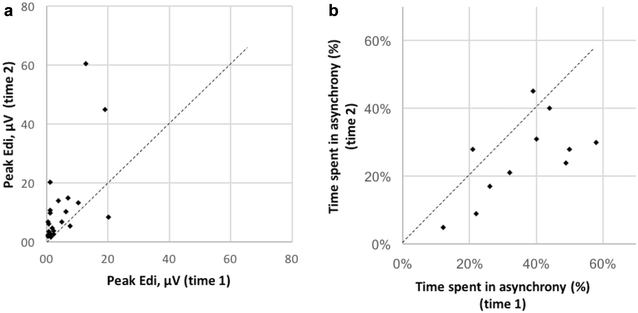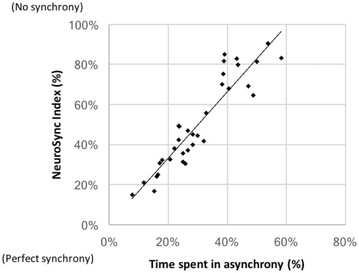Patient-ventilator asynchrony during conventional mechanical ventilation in children
- PMID: 29264742
- PMCID: PMC5738329
- DOI: 10.1186/s13613-017-0344-8
Patient-ventilator asynchrony during conventional mechanical ventilation in children
Abstract
Background: We aimed (1) to describe the characteristics of patient-ventilator asynchrony in a population of critically ill children, (2) to describe the risk factors associated with patient-ventilator asynchrony, and (3) to evaluate the association between patient-ventilator asynchrony and ventilator-free days at day 28.
Methods: In this single-center prospective study, consecutive children admitted to the PICU and mechanically ventilated for at least 24 h were included. Patient-ventilator asynchrony was analyzed by comparing the ventilator pressure curve and the electrical activity of the diaphragm (Edi) signal with (1) a manual analysis and (2) using a standardized fully automated method.
Results: Fifty-two patients (median age 6 months) were included in the analysis. Eighteen patients had a very low ventilatory drive (i.e., peak Edi < 2 µV on average), which prevented the calculation of patient-ventilator asynchrony. Children spent 27% (interquartile 22-39%) of the time in conflict with the ventilator. Cycling-off errors and trigger delays contributed to most of this asynchronous time. The automatic algorithm provided a NeuroSync index of 45%, confirming the high prevalence of asynchrony. No association between the severity of asynchrony and ventilator-free days at day 28 or any other clinical secondary outcomes was observed, but the proportion of children with good synchrony was very low.
Conclusion: Patient-ventilator interaction is poor in children supported by conventional ventilation, with a high frequency of depressed ventilatory drive and a large proportion of time spent in asynchrony. The clinical benefit of strategies to improve patient-ventilator interactions should be evaluated in pediatric critical care.
Keywords: Diaphragm function; Mechanical ventilation; Patient–ventilator asynchrony; Patient–ventilator interaction; Pediatric intensive care unit; Pediatrics.
Figures




References
-
- de Wit M, Miller KB, Green DA, Ostman HE, Gennings C, Epstein SK. Ineffective triggering predicts increased duration of mechanical ventilation. Crit Care Med. 2009;37(10):2740–2745. - PubMed
LinkOut - more resources
Full Text Sources
Other Literature Sources

